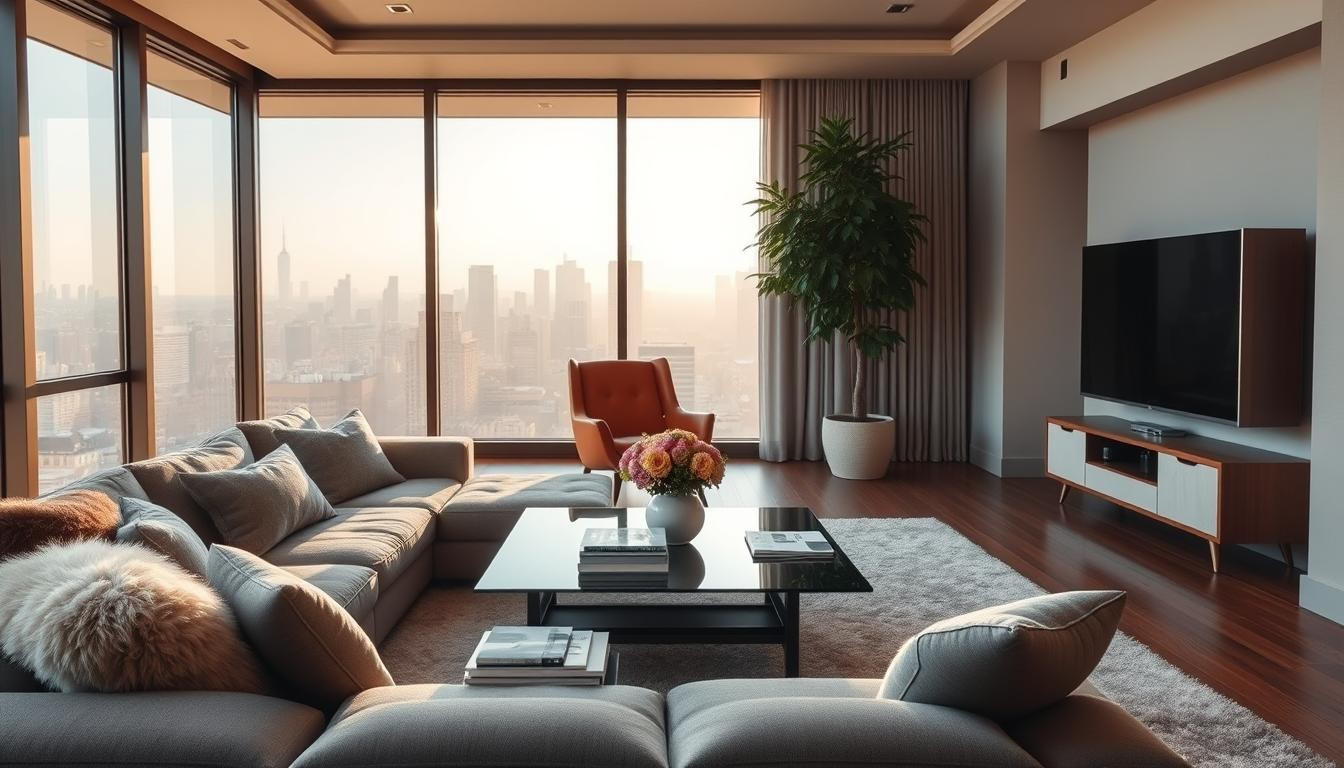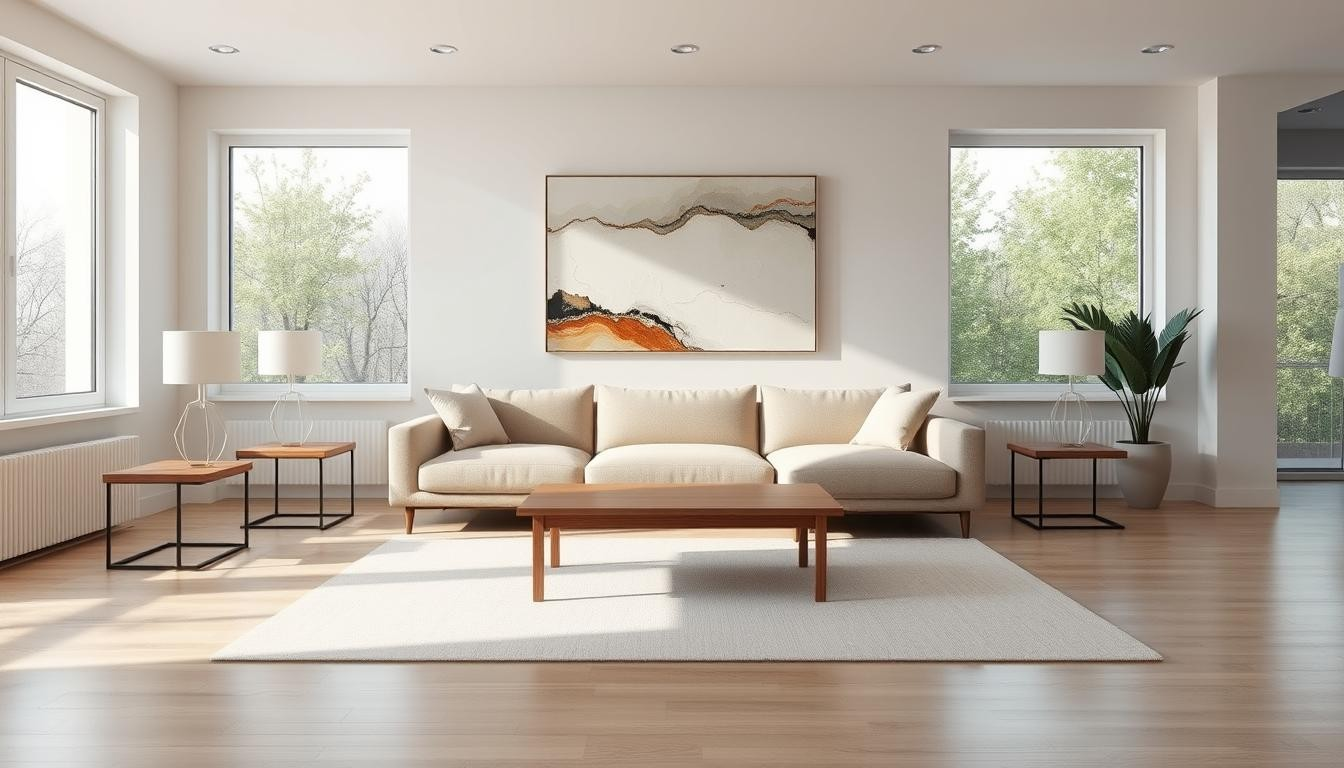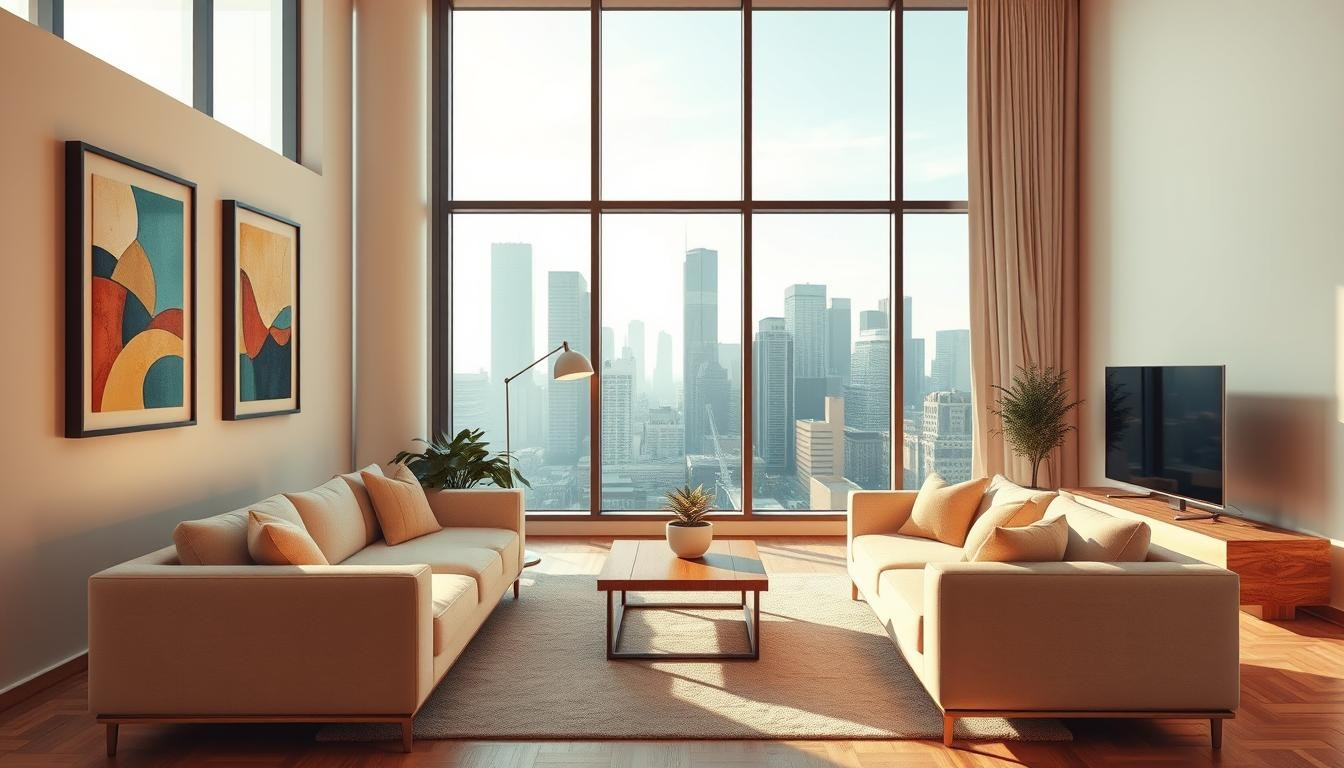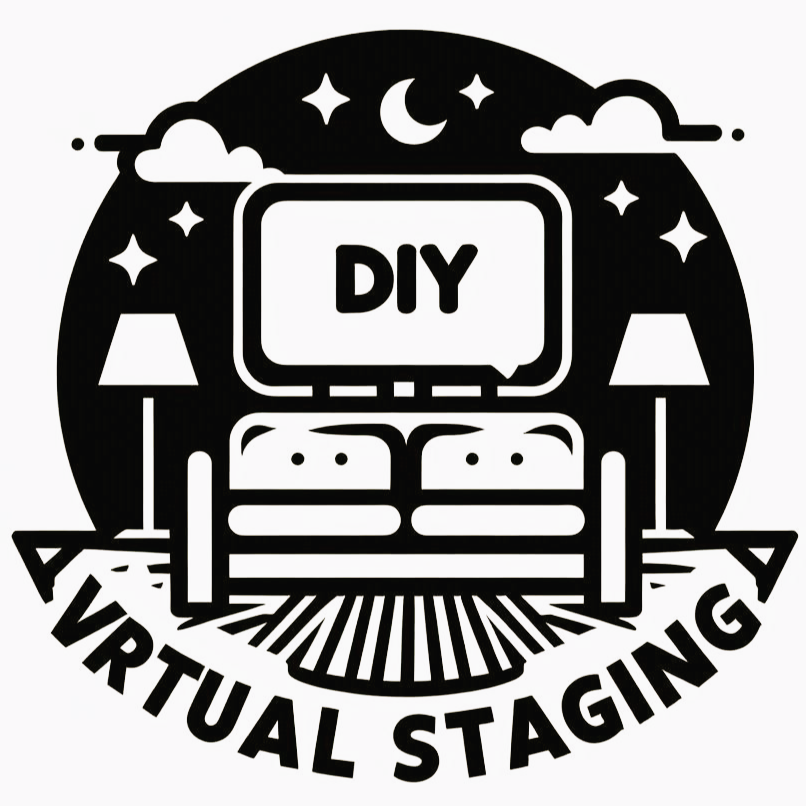Discover the Power of Virtual Staging
When selling your home, making a good first impression is key. Most homebuyers start their search online. Virtual staging uses technology to make your home look better. It's cheaper than traditional staging, saving you up to 50-80%.
Virtual staging can make your home sell 20-30% faster. Listings with virtual images get up to 95% more interest.

Virtual staging is a smart way to show your home's best side. It lets you reach more buyers. You can pick designs that fit different tastes, helping buyers see themselves in your home.
High-quality images are crucial for virtual staging. They make your home look real and appealing.
Key Takeaways
Virtual staging can save up to 50-80% compared to traditional staging costs
Listings with virtually staged images can receive up to 95% more inquiries
Properties that are virtually staged can sell 20-30% faster than those that are not staged
Virtual staging can increase the likelihood of showings by up to 70%
Customization options in virtual staging can cater to various design aesthetics
High-resolution images are essential for effective virtual staging
What Is Virtual Staging and How Does It Work?
In the world of real estate, you might have seen virtual home staging and virtual furniture staging. These new methods change how we show properties to buyers. They let you make empty or old spaces look great with just pictures.
It starts with taking high-quality photos of the property. Then, special software and virtual furniture staging tools are used. This adds real-looking furniture and decor to the photos, making the space look welcoming.

Virtual home staging is cost-effective, flexible, and fast. Traditional staging is expensive and takes time. But, virtual staging is quick and affordable, starting at $20 per image. It's perfect for sellers who want to show their property's best side without spending a lot.
For real estate agents, sellers, or buyers, knowing about virtual furniture staging and virtual home staging is key. These tools can make a property more appealing, draw in more buyers, and help sell the property faster.
The Evolution of Virtual Home Staging in Real Estate
Virtual staging has changed the real estate world. It's a smart and affordable way to show off homes. With online staging, sellers can save a lot of money. They don't need to buy furniture or decor.
This makes virtual staging very important for real estate pros. It helps them show homes in a better and cheaper way.
Virtual interior design plays a big role in virtual staging. It lets designers create beautiful and unique spaces. This can attract many different buyers, making them more interested.
Some big advantages of virtual staging are:
Properties sell up to 73% faster than those that are not staged
83% of buyers find it easier to visualize a property when it is virtually staged
Virtual staging can reduce the time it takes to bring a property to market by approximately 50%

As tech gets better, virtual staging will get even better. It's expected to grow by 20% by 2025. Virtual staging works anywhere, saving money on marketing costs.
Benefits of Virtual Staging for Property Sales
As a property seller, you aim to show your home in the best light to attract buyers. Virtual staging services can help you do this. It saves around $1,000 compared to traditional staging and is much quicker.
Virtual staging is cost-effective. Traditional staging can be pricey, with costs for furniture and designers. But, virtual staging costs only $75 to $150 per photo. Companies like Styldod offer it for as little as $16 to $23 per image.
Advantages of Virtual Staging
Cost-effective: Virtual staging is more affordable than traditional staging
Time-saving: Virtual staging can be completed quickly, allowing you to list your property faster
Flexibility: Virtual staging allows you to showcase multiple design options and styles
Virtual staging also helps you reach more people. With 97% of home buyers searching online, a strong online presence is key. It lets you create high-quality photos that highlight your property's best features.
A virtual staging company offers various design options. These can match the typical style of your property's area. This flexibility helps attract more buyers and sell your property faster.
Virtual Staging Best Practices for Real Estate Professionals
As a real estate pro, you know how key it is to show properties in their best shape. Virtual staging software is a great tool for this. It lets you make properties look amazing, even when they're empty or old.
When picking a virtual staging software, look at how customizable and clear the images are. Choose software that makes spaces look great and appealing to buyers. Prices vary, from $24 to $100 per image, based on how detailed you want it.
Here are some top tips for virtual staging:
Use top-notch images that really show what the property is like.
Make it clear that images are virtually staged with watermarks or captions.
Keep the style, colors, and design the same in all your virtual images.
Follow fair housing laws and avoid any biased elements in your staging.
By sticking to these tips and using virtual staging software well, you can make images that grab attention. These images will help draw in buyers and sell properties quicker.
Common Virtual Staging Mistakes to Avoid
Virtual home staging needs careful attention to detail. Bad image quality and wrong scaling can scare off buyers. To make great images, it's key to steer clear of common errors.
One big mistake is wrong scaling. This makes furniture look too big or too small for the room. It messes up the balance and looks off.
To avoid these mistakes, you need to know how the technology works. Virtual home staging and digital staging help make properties look good. But, you must watch out for traps.
For example, the size of art in virtual staging should match the wall and furniture. The art should also appeal to many people, not just a few.
Some important things to remember with virtual home staging and digital staging are:
Choose rugs that fit the room well
Stay away from art that's too personal or distracting
Make sure furniture looks right in the room
Tell buyers about any changes you made virtually
Knowing these common mistakes and how to avoid them helps. You can make amazing images that show off properties well. Use virtual home staging and digital staging wisely.
Maximizing ROI with Virtual Interior Design
Virtual staging services can really change the game when selling a property. With online staging, you can make a property more appealing. This attracts more buyers, leading to a better return on investment.
Recent data shows homes with virtual staging sell 73% faster. They average 24 days on the market, compared to 90 days for unstaged homes.
To get the most out of virtual interior design, high-quality, realistic images are key. Advanced technology and software make quick design changes easy. Online staging also lets you create interactive tours and 3D models. These features boost buyer engagement and speed up sales.
Benefits of virtual staging services include: More online views and inquiries Faster sales and less time on the market Higher sale prices and better ROI Cost-effective and efficient compared to traditional staging
Adding online staging to your marketing strategy can give you an edge. With the right virtual staging services, you can increase your ROI and sell your property successfully.
Legal and Ethical Considerations in Virtual Staging
Exploring virtual staging brings up important legal and ethical questions. This technology is a great tool for real estate marketing. But, it must be used with care. The Federal Trade Commission (FTC) says real estate ads can't be misleading.
It's key to tell when an image has been changed digitally. Being open about this builds trust with buyers. Some sites require you to say when images are altered. Others suggest showing both the original and staged images.
Choose designs that appeal to everyone to help buyers see their style.
Make sure furniture sizes and layouts are accurate to avoid false impressions.
Show both staged and empty or existing property photos for a full view.
By following these tips, you can stand out in the real estate market. You'll also keep trust with potential buyers.
Conclusion: Embracing Virtual Staging as Your Competitive Advantage
The real estate world is always changing, and virtual staging is now a key tool. It lets you show off properties in a way that grabs attention and saves money. This approach can lead to more interest and better results for you.
Virtual staging costs less, from $42 to $200 per photo. This is much cheaper than the thousands for real furniture. Plus, good virtual photos can make a property sell for 5-10% more. You can get these photos ready fast, often in just hours or days.
Using virtual staging means you can spend more on other important things. Like ads or better photos. This makes your listings more appealing and reaches more people. As the real estate world keeps changing, using this tech can really help you stand out. It can make you successful in the fast-paced property market.
